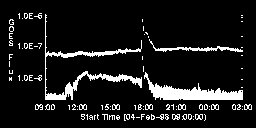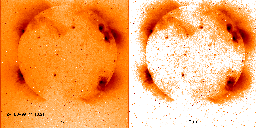
Science Nugget: Feb 07, 1998
Instrument Status (click on
images to see larger and more useful versions)
We found that there had been another entrance filter opening early on 24 January 1998. This means we have lost 1/3 of the entrance filter. The level of straylight increased due to the new opening. If a leak image taken before 24 January is subtracted from an image after, we see under-correction. This is shown in the left panel of the following figure. Such an image was shown in the ''First_Light'' page on the Web for about a week. But we have already taken the right leak images in thin Al and AlMg filters, so the images for the SXT movie are now reasonably good (see the right panel).

Otherwise, the SXT instrument continues to work without problems. For a summary index listing of the weekly science reports, click here.
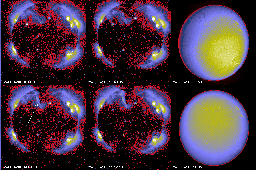
This event did not show much X-ray emission. In the GOES data, which is shown below, it is not possible to isolate contributions from this event.
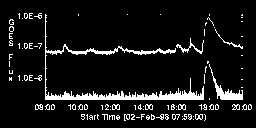
Another eruptive event was seen on 4 February at the north-western limb. This event may have proceeded rather slowly.
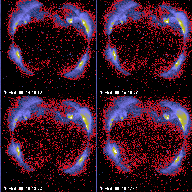
The counterpart in the GOES light curves is not clear. The impulsive
emission just before 18:00 UT came from AR 8151, which was in the south-east
quadrant. Does the increase in the GOES high channel starting 11 UT, explain
the eruptive event?
